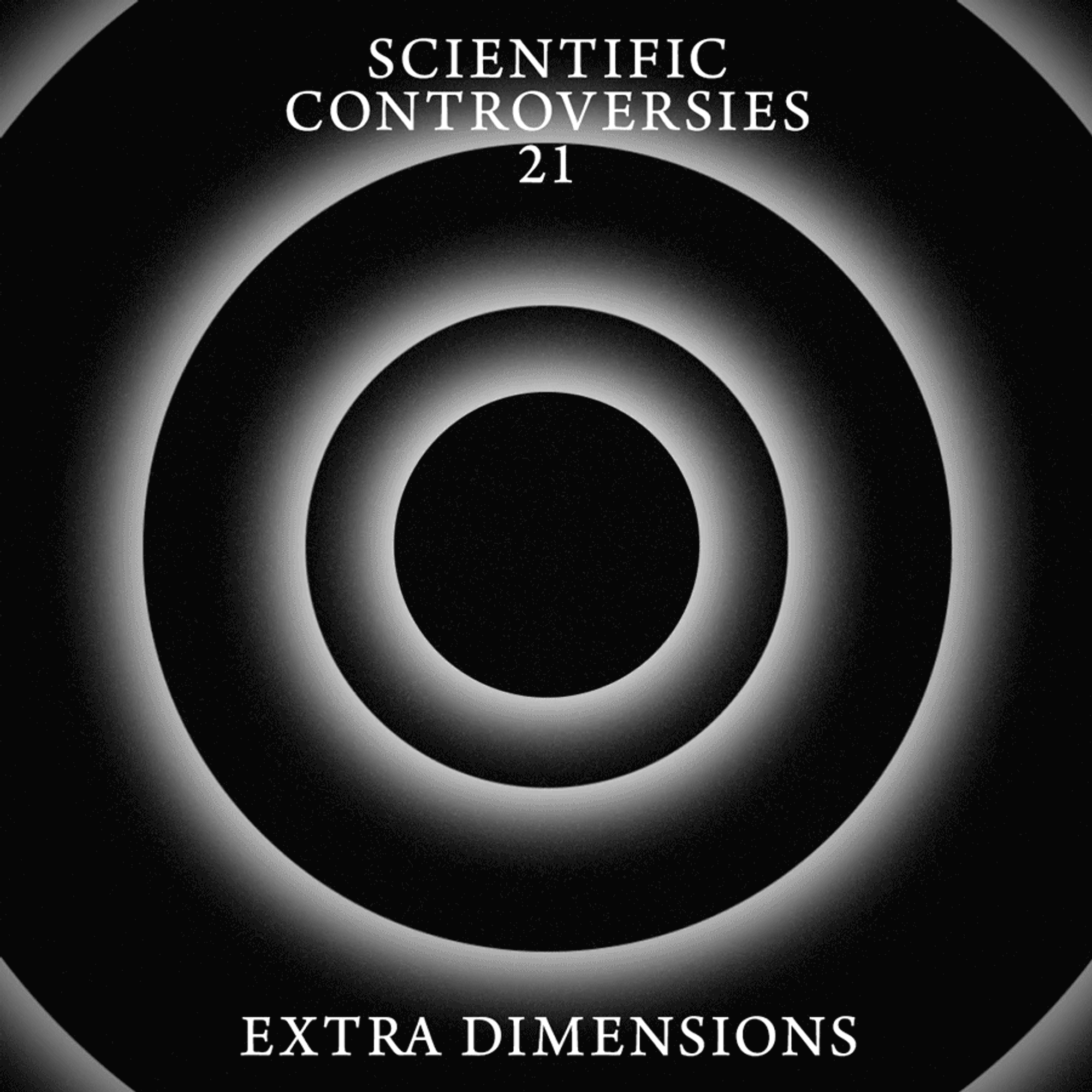
Scientific Controversies No. 21:
Extra Dimensions
The universe appears to be four-dimensional. There are the directions East-West and North-South. There is Up-Down and a time dimension Past-Future. Although human beings by the billions confirm this observation daily, it might not be true. When space and time began in a big bang, the universe may have been created with many extra spatial dimensions. As spacetime expanded out of the primordial explosion, three dimensions became large while the others stagnated, trapped and folded up like a cosmic origami. Too small to stretch your hands into, they hide from us, permitting the illusion that we are three-dimensional. Or, many spatial dimensions may have expanded to become as vast as the billions of light-years of space we observe, but we are glued to a three-dimensional membrane floating in higher-dimensional space, unaware of parallel membranes replete with galaxies and beings, glued to them, asking similar questions.
Our Director of Sciences, Prof. Janna Levin, invites renowned theoretical physicists Prof. Gregory Gabadadze and Prof. Cumrun Vafa to reflect on our dimensionality, string theory, reality, and the multiverse.
Cumrun Vafa is the Hollis Professor of Mathematicks and Natural Philosophy in the Physics Department at Harvard University, where he does research and teaches theoretical physics. Born in Iran, he moved to the US for higher education where he received his B.S. in math and physics from MIT before moving to Princeton University, where he received his Ph.D. in theoretical physics. In 2017, he jointly won the Breakthrough Prize in Fundamental Physics for the advancement of string theory.
Gregory Gabadadze is a physicist of Georgian origin. He is a Professor of Physics and the Dean for Science at New York University, where he served previously as the Chair of the Department of Physics and the Director of the Center for Cosmology and Particle Physics. Professor Gabadadze received pre-college training in physics and mathematics in Tbilisi, a college degree from Moscow State University, and a PhD from Rutgers University. He’s best known for the Dvali-Gabadadze-Porrati brane-world model, and for the de Rham-Gabadadze-Tolley theory of massive gravity.
Janna Levin is the Director of Sciences and Chair of the Science Studios at Pioneer Works. She is also the Claire Tow Professor of physics and astronomy at Barnard College of Columbia University. A Guggenheim Fellow, Janna has contributed to an understanding of black holes, the cosmology of extra dimensions, and gravitational waves in the shape of spacetime. She is the presenter of the NOVA feature Black Hole Apocalypse, aired on PBS—the first female presenter for NOVA in 35 years. Janna also won a PEN prize for a first work of fiction.
This project is supported by Science Sandbox, a Simons Foundation initiative dedicated to engaging everyone with the process of science.
